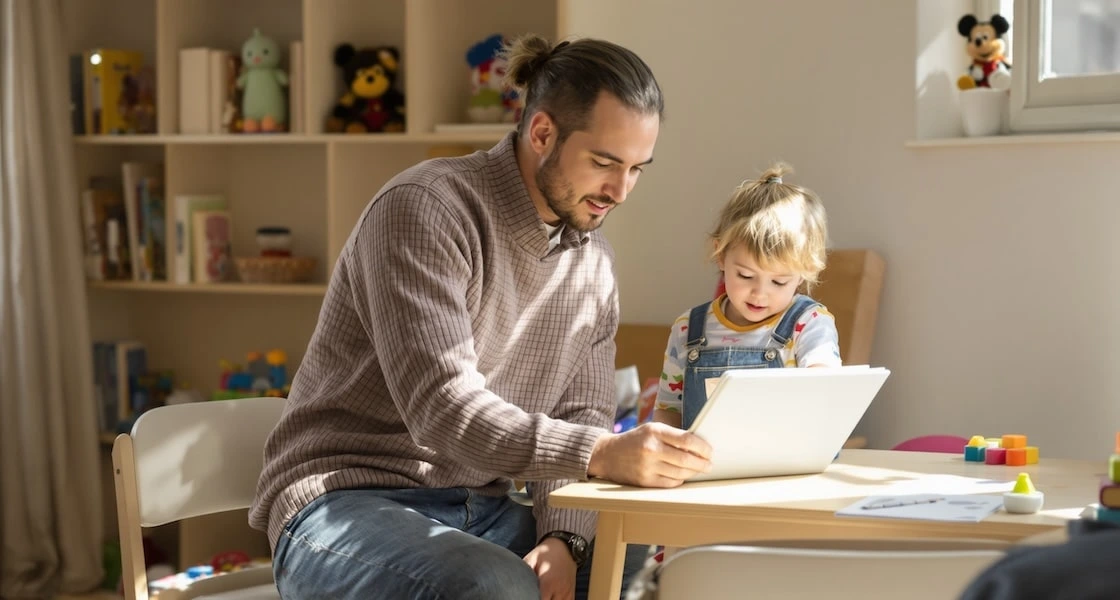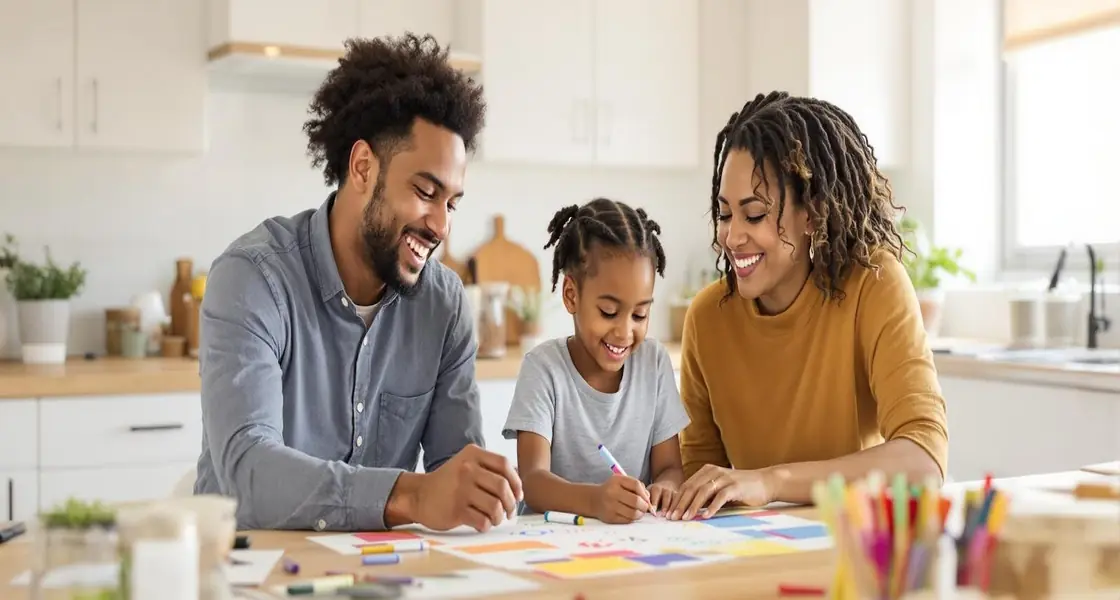What if helping your child become a confident writer didn’t mean piles of workbooks, but simply noticing the words in your daily conversations and family adventures? Nouns, the simple naming words that let us describe the people, places, and things we love, are the perfect starting point. When kids grasp different noun categories, they can share their world more vividly.
Outschool makes it easy to bring grammar to life at home with engaging online classes led by passionate teachers. From interactive small-group sessions to flexible self-paced options, you’ll find the right fit for your homeschooling journey and give your child the confidence to explore language with joy.
What are nouns?
Nouns are simply naming words. They label people, places, things, and even ideas like love or courage. They form the foundation of every sentence your child speaks or writes, giving language its building blocks. For example, when your child says "dog," "park," or "happiness," they’re using nouns to share their world. Understanding nouns is an essential first step in grammar learning, making it easier for kids to become confident readers and writers.
Exploring the types of nouns
Now that your child understands what nouns are, it's time to explore the different kinds. Each type has a special role in helping children express themselves more clearly and creatively.
- Common nouns: General people, places, or things like teacher, park, or bicycle. They are words that can apply to any person, location, or object in that category.
- Proper nouns: Specific names that always start with a capital letter, such as Mrs. Johnson, Central Park, or Schwinn.
- Concrete nouns: Things your child can experience through the five senses, like chocolate (taste), music (sound), or sandpaper (touch).
- Abstract noun: Feelings, ideas, or concepts that can’t be touched, such as friendship, curiosity, or patience.
While these are the main types of nouns children usually start with, grammar can get even more detailed as they grow. Older learners may also explore other categories, which are often grouped into sets such as:
- Collective nouns are words that describe groups as single units, like family, team, or flock.
- Singular nouns name one item (like cat), while plural nouns name more than one (like cats).
- Countable nouns can be numbered (like books), while uncountable nouns can’t easily be counted (like milk).
- Compound nouns combine two or more words to make one noun (like toothpaste), while possessive nouns show ownership (like Emma’s toy).
- Gerunds are words ending in -ing that act as nouns (like reading is fun).
Tips to help your child tell noun types apart
It can be tricky for kids to recognize the differences at first, but a few simple strategies make it easier:
- Look for capital letters to spot proper nouns. Point out names of friends, cities, or pets, and explain how they’re always capitalized.
- Ask if you can see, touch, taste, hear, or smell it. If yes, it’s usually a concrete noun. Try a quick sensory game: “Can we smell pizza? Can we touch music?”
- If it’s a feeling or idea that can’t be experienced with the senses, it’s an abstract noun. Encourage kids to share emotions like happiness or ideas like fairness.
- Common nouns are the everyday names for things all around us, like dog or city. Ask your child to point out as many as they can in the room to practice.
With these simple clues, your learner can quickly sort nouns into categories and use them more confidently in writing and conversation.
Making grammar fun with engaging activities to teach types of nouns
Learning about nouns doesn't have to happen at a desk. When you teach types of nouns through fun activities, your children connect grammar concepts to their everyday world, helping abstract ideas come alive and build stronger communication skills.
These hands-on approaches work beautifully for families with multiple ages or neurodiverse learners who benefit from interactive, multi-sensory experiences that lead to improved writing confidence:
1. Create noun scavenger hunts
During nature walks or field trips, challenge kids to spot common nouns (rocks, trees), proper nouns (street signs, store names), and collective nouns (flocks of birds, groups of tourists).
2. Transform storytelling time
Turn reading sessions into noun practice by having children identify different noun types in their favorite books, or encourage them to create original stories where they must include specific types of nouns in each paragraph.
3. Label household items
Use colorful sticky notes to label items around the house, turning your home into a living grammar lesson. Children can physically touch concrete nouns while discussing abstract concepts like "comfort" or "safety."
4. Design sorting activities
Sorting activities with picture cards or real objects enhance understanding, especially for neurodiverse learners who benefit from categorizing and organizing information with extended processing time and visual supports.
5. Build noun mini-books
Have children create their own reference guides with drawings and examples. This gives them ownership over their learning while reinforcing different types of nouns through creative expression.
6. Play interactive games
Games like "Nouns Around Town" let family members take turns naming nouns they see in different settings. You can adapt the complexity and time limits based on each child's developmental level and processing needs.
Types of nouns: Frequently asked questions (FAQs)
As homeschooling parents, it’s natural to wonder about the best ways to make grammar feel simple and enjoyable for your child. The questions and answers here are meant to reassure you and offer practical ideas, so you can feel confident guiding your learner as they explore the different types of nouns and how to use them every day.
What are the main types of nouns I should teach my child?
The four main types of nouns to focus on are common nouns (general items like "dog" or "city"), proper nouns (specific names like "Buddy" or "Chicago"), concrete nouns (things you can touch like "apple" or "chair"), and abstract nouns (ideas or feelings like "happiness" or "bravery"). For younger learners ages 5-7, start with common and proper nouns, then introduce concrete nouns around ages 6-8, while abstract nouns work best for older children who can grasp concepts they can't see or touch.
How can I make learning about nouns fun and engaging at home?
Transform your home into a learning playground by organizing noun hunts where children search for different types of nouns in books they're reading or around the house. Sorting activities work wonderfully, too. Have your child categorize picture cards or household items into people, places, and things. These activities can easily be adapted for different ages and learning styles.
Why is understanding nouns important for my child's writing development?
Strong noun knowledge gives children the vocabulary tools they need to write with precision and creativity. When kids understand different types of nouns, they can choose more specific words that make their writing become more vivid. Instead of writing "the animal," they might write "the golden retriever" or "the butterfly." Teaching grammar within the context of writing helps students better understand and use noun concepts in their own compositions.
What are some quick daily activities to practice noun recognition?
Start each day by having your child name three different types of nouns they see during breakfast: the concrete nouns on the table, proper nouns on packaging, and abstract nouns describing how the food tastes. During car rides, play "noun categories" where you take turns naming items that fit specific noun types. You can create simple labels for items around your home, turning everyday objects into learning opportunities without special materials or preparation time.
How do I know if my child is ready to learn about abstract nouns?
Children are typically ready to explore abstract nouns when they can confidently identify and use common and proper nouns in their speech and writing. Look for signs like your child naturally describing emotions, discussing concepts like "friendship" or "fairness," or asking questions about ideas they can't see or touch. Most children around ages 7-9 begin to grasp abstract concepts, but every learner develops at their own pace, so follow your child's curiosity and interest level.
Growing strong communication skills with nouns
Teaching the types of nouns at home turns everyday life into a language-rich environment, helping your child grow as a clear and confident communicator. Mixing playful activities, real-world practice, and plenty of encouragement gives your learner the tools to describe their world with detail and imagination.
One of the best parts of homeschooling is shaping lessons around your child’s pace, interests, and learning style. Outschool is here to support you with engaging, teacher-led classes that blend easily into your routine. With flexible options, your child can build confidence in grammar while keeping the learning experience fun and personal.


.svg)
.svg)







